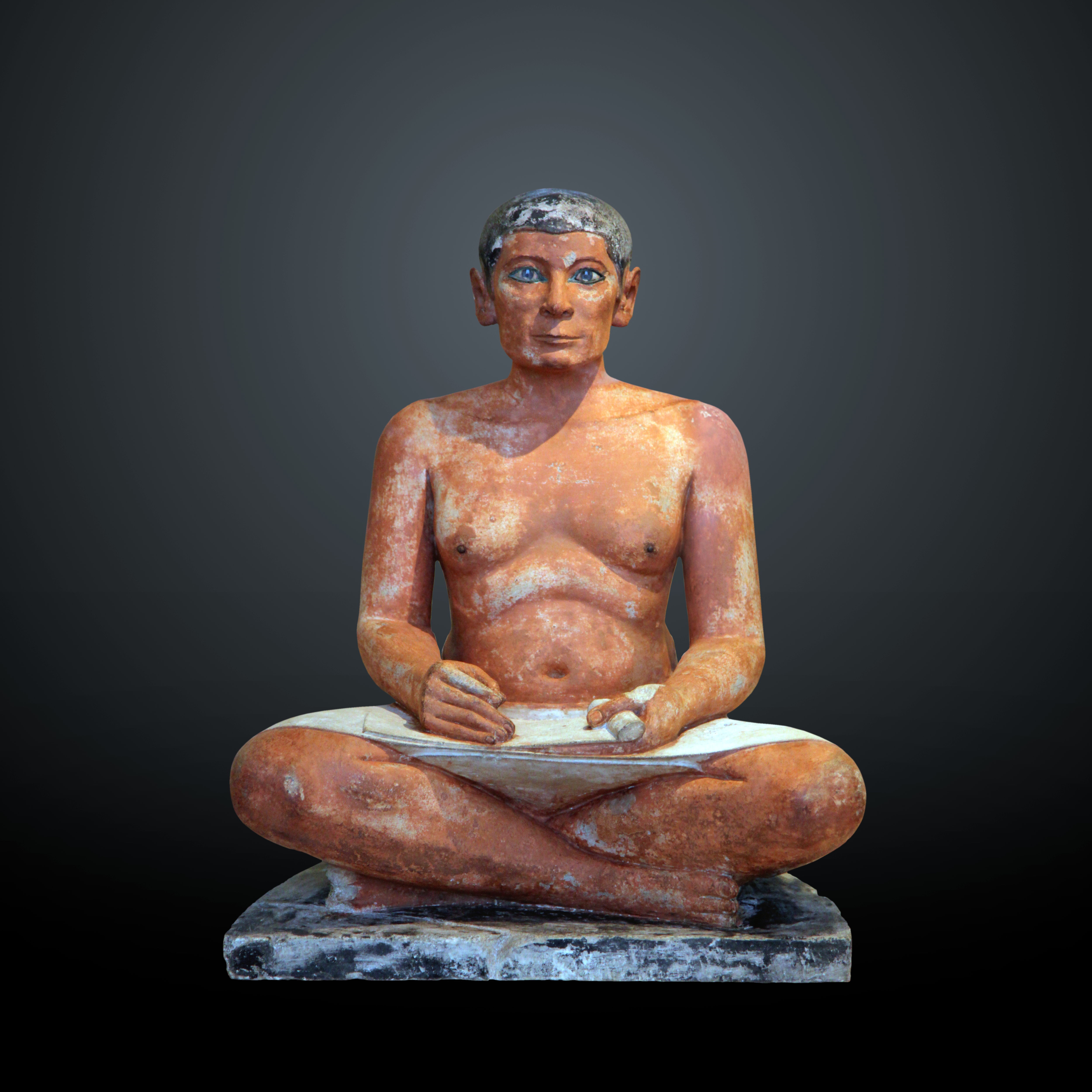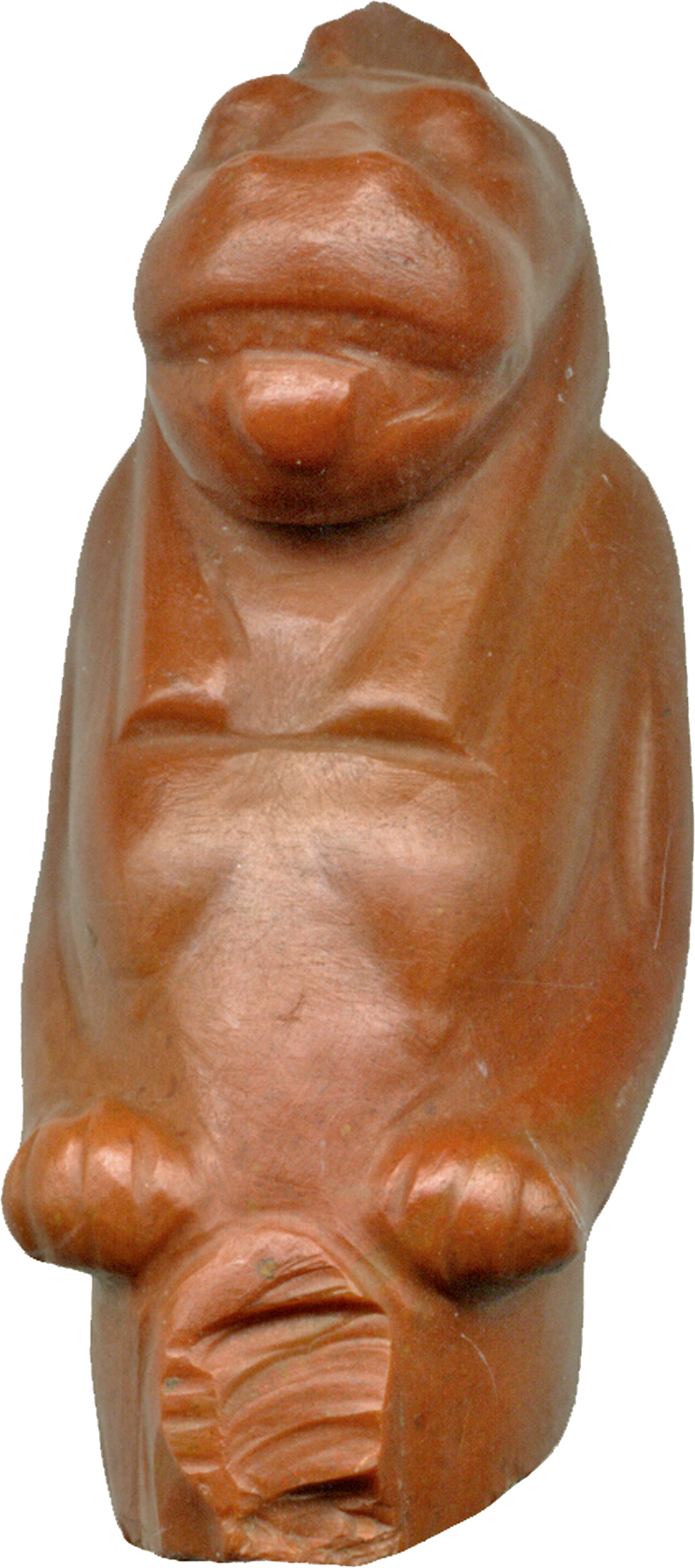|
Ramose (TT7)
Ramose was an ancient Egyptian scribe and artisan who lived in Deir el-Medina on the west bank of the Nile, opposite Thebes, during the reigns of Ramesses II. He held the position of Scribe of the Tomb, the highest administrative position for a scribe in Deir el-Medina, from around years 5 to 38 of Ramesses II's reign. He was buried in a tomb in the village necropolis. Ramose created a total of three tombs for himself in the Theban Necropolis, TT7, TT212 and TT250. Family Ramose was the son of the retainer Amenemheb and the Lady Kakaia. He was married to the Lady Mutemwia (Wia), daughter of the royal scribe Huy and Nofretkau. Despite extensive offerings to fertility gods like Hathor, Min and Taweret, Ramose and Wia were unable to have a biological child. Ramose is thought to have adopted the scribe Qenhirkhopeshef so that the latter could inherit his estate.Benedict G. Davies, Who's Who at Deir el-Medina: A Prosopographic Study of the Royal Workmen’s Community, Nederlands I ... [...More Info...] [...Related Items...] OR: [Wikipedia] [Google] [Baidu] |
Scribe Rames Louvre E16346
A scribe is a person who serves as a professional copyist, especially one who made copies of manuscripts before the invention of automatic printing. The profession of the scribe, previously widespread across cultures, lost most of its prominence and status with the advent of the printing press. The work of scribes can involve copying manuscripts and other texts as well as secretarial and administrative duties such as the taking of dictation and keeping of business, judicial, and historical records for kings, nobles, temples, and cities. The profession has developed into public servants, journalists, accountants, bookkeepers, typists, and lawyers. In societies with low literacy rates, street-corner letter-writers (and readers) may still be found providing scribe service. Ancient Egypt One of the most important professionals in ancient Egypt was a person educated in the arts of writing (both hieroglyphics and hieratic scripts, as well as the demotic script from the sec ... [...More Info...] [...Related Items...] OR: [Wikipedia] [Google] [Baidu] |
Min (god)
Min (Egyptian mnw) is an ancient Egyptian god whose cult originated in the predynastic period (4th millennium BCE). He was represented in many different forms, but was most often represented in male human form, shown with an erect penis which he holds in his right hand and an upheld left arm holding a flail. Myths and function Min's cult began and was centered around Coptos (Koptos) and Akhmim (Panopolis) of upper Egypt, where in his honour great festivals were held celebrating his "coming forth" with a public procession and presentation of offerings. His other associations include the eastern desert and links to the god Horus. Flinders Petrie excavated two large statues of Min at Qift which are now in the Ashmolean Museum and it is thought by some that they are pre-dynastic. Although not mentioned by name, a reference to "he whose arm is raised in the East" in the Pyramid Texts is thought to refer to Min. His importance grew in the Middle Kingdom when he became even mo ... [...More Info...] [...Related Items...] OR: [Wikipedia] [Google] [Baidu] |
Nineteenth Dynasty Of Egypt
The Nineteenth Dynasty of Egypt (notated Dynasty XIX), also known as the Ramessid dynasty, is classified as the second Dynasty of the Ancient Egyptian New Kingdom period, lasting from 1292 BC to 1189 BC. The 19th Dynasty and the 20th Dynasty furthermore together constitute an era known as the ''Ramesside period''. This Dynasty was founded by Vizier Ramesses I, whom Pharaoh Horemheb chose as his successor to the throne. History Background The warrior kings of the early 18th Dynasty had encountered only little resistance from neighbouring kingdoms, allowing them to expand their realm of influence easily, but the international situation had changed radically towards the end of the dynasty. The Hittites had gradually extended their influence into Syria and Canaan to become a major power in international politics, a power that both Seti I and his son Ramesses II would confront in the future. 19th Dynasty Seti and Ramesses II The New Kingdom of Egypt reached the zenith of ... [...More Info...] [...Related Items...] OR: [Wikipedia] [Google] [Baidu] |
List Of Ancient Egyptian Scribes
This is a list of Egyptian scribes, almost exclusively from the ancient Egyptian periods. The hieroglyph used to signify the scribe, ''to write'', and ''"writings"'', etc., is Gardiner sign Y3, Y3 from the category of: 'writings, games, & music'. The hieroglyph contains the scribe's writing palette, a vertical case to hold writing-reeds, and a leather pouch to hold the colored ink blocks, mostly black and red. Alphabetic list :''This list is incomplete; you can help by expanding it.'' *Ahmes * Amenemope (author) *Amenemope (Papyrus Anastasi I) *Amenhotep, son of Hapu * Amenmose *Ani, of the Papyrus of Ani for scribe Ani * Ankhefenamun * Butehamun * Dua-Kheti-("Kheti (scribe)") *Hesy-Ra * Hori *Hunefer * Imiseba * Kaaper *Ken-Amun * Khakheperresenb *Menna *Meryre II *Mose (scribe) *Nakht *Nakhtmin *Nebamun * Neferhotep *Pediamenopet *Penthu *Ptahhotep Tshefi *Ramose (TT7) * Reni-seneb – owner of the ''Chair of Reniseneb'' *Roy (Egyptian Noble) *Setau *''The Seated Sc ... [...More Info...] [...Related Items...] OR: [Wikipedia] [Google] [Baidu] |
Vizier (Ancient Egypt)
The vizier () was the highest official in ancient Egypt to serve the pharaoh (king) during the Old, Middle, and New Kingdoms. Vizier is the generally accepted rendering of ancient Egyptian , etc., among Egyptologists. The ''Instruction of Rekhmire'' (''Installation of the Vizier''), a New Kingdom text, defines many of the duties of the , and lays down codes of behavior. The viziers were often appointed by the pharaoh. During the 4th Dynasty and early 5th Dynasty, viziers were exclusively drawn from the royal family; from the period around the reign of Neferirkare Kakai onwards, they were chosen according to loyalty and talent or inherited the position from their fathers. Responsibilities The viziers were appointed by the pharaohs and often belonged to a pharaoh's family. The vizier's paramount duty was to supervise the running of the country, much like a prime minister. At times this included small details such as sampling the city's water supply. All other lesser supervis ... [...More Info...] [...Related Items...] OR: [Wikipedia] [Google] [Baidu] |
Jaroslav Černý (Egyptologist)
Jaroslav Černý (; 22 August 1898 – 29 May 1970) was a Czech Egyptologist. From 1929 to 1946 he was a lecturer and ''docent'' at Charles University in Prague, from 1946 to 1951, the Edwards Professor of Egyptology at the University College, London. From 1951 to 1965, he was Professor of Egyptology at University of Oxford. Early life Jaroslav Černý was born on 22 August 1898 in Pilsen in Austro-Hungary (currently part of the Czech Republic). His family lived in Pilsen until 1913, then moved to Slaný. J. Černý continued his studies at a ''gymnasium'' in Pilsen until 1917. He studied from 1917 till 1922 at Charles University, where he received his doctorate in 1922, and his ''habilitation'' in 1929. Career He took part in Bernard Bruyère's excavations at Deir el-Medina from 1925 to 1970 and the village became the focus of a lifelong study. One volume, of a planned three on the village, was published before his death with other parts published posthumously."Life of the a ... [...More Info...] [...Related Items...] OR: [Wikipedia] [Google] [Baidu] |
Amun
Amun (; also ''Amon'', ''Ammon'', ''Amen''; egy, jmn, reconstructed as (Old Egyptian and early Middle Egyptian) → (later Middle Egyptian) → (Late Egyptian), cop, Ⲁⲙⲟⲩⲛ, Amoun) romanized: ʾmn) was a major ancient Egyptian deity who appears as a member of the Hermopolitan Ogdoad. Amun was attested from the Old Kingdom together with his wife Amunet. With the 11th Dynasty ( 21st century BC), Amun rose to the position of patron deity of Thebes by replacing Montu. After the rebellion of Thebes against the Hyksos and with the rule of Ahmose I (16th century BC), Amun acquired national importance, expressed in his fusion with the Sun god, Ra, as Amun-Ra (alternatively spelled Amon-Ra or Amun-Re). Amun-Ra retained chief importance in the Egyptian pantheon throughout the New Kingdom (with the exception of the " Atenist heresy" under Akhenaten). Amun-Ra in this period (16th to 11th centuries BC) held the position of transcendental, self-created creator dei ... [...More Info...] [...Related Items...] OR: [Wikipedia] [Google] [Baidu] |
Taweret
In Ancient Egyptian religion, Taweret (also spelled Taurt, Tuat, Tuart, Ta-weret, Tawaret, Twert and Taueret, and in Greek, Θουέρις – Thouéris, Thoeris, Taouris and Toeris) is the protective ancient Egyptian goddess of childbirth and fertility. The name "Taweret" (''Tȝ-wrt'') means "she who is great" or simply "great one", a common pacificatory address to dangerous deities. The deity is typically depicted as a bipedal female hippopotamus with feline attributes, pendulous female human breasts, the limbs and paws of a lion, and the back and tail of a Nile crocodile. She commonly bears the epithets "Lady of Heaven", "Mistress of the Horizon", "She Who Removes Water", "Mistress of Pure Water", and "Lady of the Birth House". History and development Archaeological evidence demonstrates that hippopotamuses inhabited the Nile well before the dawn of Early Dynastic Period (before 3000 BCE). The violent and aggressive behavior of these creatures intrigued the people that inhabi ... [...More Info...] [...Related Items...] OR: [Wikipedia] [Google] [Baidu] |
Hathor
Hathor ( egy, ḥwt-ḥr, lit=House of Horus, grc, Ἁθώρ , cop, ϩⲁⲑⲱⲣ, Meroitic: ) was a major goddess in ancient Egyptian religion who played a wide variety of roles. As a sky deity, she was the mother or consort of the sky god Horus and the sun god Ra, both of whom were connected with kingship, and thus she was the symbolic mother of their earthly representatives, the pharaohs. She was one of several goddesses who acted as the Eye of Ra, Ra's feminine counterpart, and in this form she had a vengeful aspect that protected him from his enemies. Her beneficent side represented music, dance, joy, love, sexuality, and maternal care, and she acted as the consort of several male deities and the mother of their sons. These two aspects of the goddess exemplified the Egyptian conception of femininity. Hathor crossed boundaries between worlds, helping deceased souls in the transition to the afterlife. Hathor was often depicted as a cow, symbolizing her maternal a ... [...More Info...] [...Related Items...] OR: [Wikipedia] [Google] [Baidu] |





_(2865505031).jpg)

